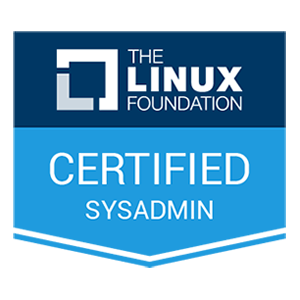编程语言
335
日期和时间
1.1 QDate
QDate类可以封装日期信息也可以通过这个类得到日期相关的信息, 包括:
年, 月, 日。
// 构造函数 QDate::QDate(); QDate::QDate(int y, int m, int d); // 公共成员函数 // 重新设置日期对象中的日期 bool QDate::setDate(int year, int month, int day); // 给日期对象添加 ndays 天 QDate QDate::addDays(qint64 ndays) const; // 给日期对象添加 nmonths 月 QDate QDate::addMonths(int nmonths) const; // 给日期对象添加 nyears 月 QDate QDate::addYears(int nyears) const; // 得到日期对象中的年/月/日 int QDate::year() const; int QDate::month() const; int QDate::day() const; void QDate::getDate(int *year, int *month, int *day) const; // 日期对象格式化 /* d - The day as a number without a leading zero (1 to 31) dd - The day as a number with a leading zero (01 to 31) ddd - The abbreviated localized day name (e.g. 'Mon' to 'Sun'). Uses the system locale to localize the name, i.e. QLocale::system(). dddd - The long localized day name (e.g. 'Monday' to 'Sunday'). Uses the system locale to localize the name, i.e. QLocale::system(). M - The month as a number without a leading zero (1 to 12) MM - The month as a number with a leading zero (01 to 12) MMM - The abbreviated localized month name (e.g. 'Jan' to 'Dec'). Uses the system locale to localize the name, i.e. QLocale::system(). MMMM - The long localized month name (e.g. 'January' to 'December'). Uses the system locale to localize the name, i.e. QLocale::system(). yy - The year as a two digit number (00 to 99) yyyy - The year as a four digit number. If the year is negative, a minus sign is prepended, making five characters. */ QString QDate::toString(const QString &format) const; // 操作符重载 ==> 日期比较 bool QDate::operator!=(const QDate &d) const; bool QDate::operator<(const QDate &d) const; bool QDate::operator<=(const QDate &d) const; bool QDate::operator==(const QDate &d) const; bool QDate::operator>(const QDate &d) const; bool QDate::operator>=(const QDate &d) const; // 静态函数 -> 得到本地的当前日期 [static] QDate QDate::currentDate();
1.2 QTime
QTime类可以封装时间信息也可以通过这个类得到时间相关的信息, 包括:
时, 分, 秒, 毫秒。
// 构造函数 QTime::QTime(); /* h ==> 取值范围: 0 ~ 23 m and s ==> 取值范围: 0 ~ 59 ms ==> 取值范围: 0 ~ 999 */ QTime::QTime(int h, int m, int s = 0, int ms = 0); // 公共成员函数 // Returns true if the set time is valid; otherwise returns false. bool QTime::setHMS(int h, int m, int s, int ms = 0); QTime QTime::addSecs(int s) const; QTime QTime::addMSecs(int ms) const; // 示例代码 QTime n(14, 0, 0); // n == 14:00:00 QTime t; t = n.addSecs(70); // t == 14:01:10 t = n.addSecs(-70); // t == 13:58:50 t = n.addSecs(10 * 60 * 60 + 5); // t == 00:00:05 t = n.addSecs(-15 * 60 * 60); // t == 23:00:00 // 从时间对象中取出 时/分/秒/毫秒 // Returns the hour part (0 to 23) of the time. Returns -1 if the time is invalid. int QTime::hour() const; // Returns the minute part (0 to 59) of the time. Returns -1 if the time is invalid. int QTime::minute() const; // Returns the second part (0 to 59) of the time. Returns -1 if the time is invalid. int QTime::second() const; // Returns the millisecond part (0 to 999) of the time. Returns -1 if the time is invalid. int QTime::msec() const; // 时间格式化 /* -- 时 -- h ==> The hour without a leading zero (0 to 23 or 1 to 12 if AM/PM display) hh ==> The hour with a leading zero (00 to 23 or 01 to 12 if AM/PM display) H ==> The hour without a leading zero (0 to 23, even with AM/PM display) HH ==> The hour with a leading zero (00 to 23, even with AM/PM display) -- 分 -- m ==> The minute without a leading zero (0 to 59) mm ==> The minute with a leading zero (00 to 59) -- 秒 -- s ==> The whole second, without any leading zero (0 to 59) ss ==> The whole second, with a leading zero where applicable (00 to 59) -- 毫秒 -- zzz ==> The fractional part of the second, to millisecond precision, including trailing zeroes where applicable (000 to 999). -- 上午或者下午 AP or A ==> 使用AM/PM(大写) 描述上下午, 中文系统显示汉字 ap or a ==> 使用am/pm(小写) 描述上下午, 中文系统显示汉字 */ QString QTime::toString(const QString &format) const; // 阶段性计时 // 过时的API函数 // 开始计时 void QTime::start(); // 计时结束 int QTime::elapsed() const; // 重新计时 int QTime::restart(); // 推荐使用的API函数 // QElapsedTimer 类 void QElapsedTimer::start(); qint64 QElapsedTimer::restart(); qint64 QElapsedTimer::elapsed() const; // 操作符重载 ==> 时间比较 bool QTime::operator!=(const QTime &t) const; bool QTime::operator<(const QTime &t) const; bool QTime::operator<=(const QTime &t) const; bool QTime::operator==(const QTime &t) const; bool QTime::operator>(const QTime &t) const; bool QTime::operator>=(const QTime &t) const; // 静态函数 -> 得到当前时间 [static] QTime QTime::currentTime();
1.3 QDateTime
QDateTime类可以封装日期和时间信息也可以通过这个类得到日期和时间相关的信息, 包括:
年, 月, 日, 时, 分, 秒,毫秒。 其实这个类就是QDate和QTime这两个类的结合体。
// 构造函数 QDateTime::QDateTime(); QDateTime::QDateTime(const QDate &date, const QTime &time, Qt::TimeSpec spec = Qt::LocalTime); // 公共成员函数 // 设置日期 void QDateTime::setDate(const QDate &date); // 设置时间 void QDateTime::setTime(const QTime &time); // 给当前日期对象追加 年/月/日/秒/毫秒, 参数可以是负数 QDateTime QDateTime::addYears(int nyears) const; QDateTime QDateTime::addMonths(int nmonths) const; QDateTime QDateTime::addDays(qint64 ndays) const; QDateTime QDateTime::addSecs(qint64 s) const; QDateTime QDateTime::addMSecs(qint64 msecs) const; // 得到对象中的日期 QDate QDateTime::date() const; // 得到对象中的时间 QTime QDateTime::time() const; // 日期和时间格式, 格式字符参考QDate 和 QTime 类的 toString() 函数 QString QDateTime::toString(const QString &format) const; // 操作符重载 ==> 日期时间对象的比较 bool QDateTime::operator!=(const QDateTime &other) const; bool QDateTime::operator<(const QDateTime &other) const; bool QDateTime::operator<=(const QDateTime &other) const; bool QDateTime::operator==(const QDateTime &other) const; bool QDateTime::operator>(const QDateTime &other) const; bool QDateTime::operator>=(const QDateTime &other) const; // 静态函数 // 得到当前时区的日期和时间(本地设置的时区对应的日期和时间) [static] QDateTime QDateTime::currentDateTime();
1.4 定时器类QTimer
在进行窗口程序的处理过程中, 经常要周期性的执行某些操作, 或者制作一些动画效果,看似比较复杂的问题使用定时器就可以完美的解决这些问题
Qt中提供了定时器方式,介绍一下Qt中的定时器类 QTimer 的使用方法。
要使用它,只需创建一个QTimer类对象,然后调用其 start() 函数开启定时器,此后QTimer对象就会周期性的发出 timeout() 信号。我们先来了解一下这个类的相关API。
1.4.1 public/slot function
// 构造函数 // 如果指定了父对象, 创建的堆内存可以自动析构 QTimer::QTimer(QObject *parent = nullptr); // 设置定时器时间间隔为 msec 毫秒 // 默认值是0,一旦窗口系统事件队列中的所有事件都已经被处理完,一个时间间隔为0的QTimer就会触发 void QTimer::setInterval(int msec); // 获取定时器的时间间隔, 返回值单位: 毫秒 int QTimer::interval() const; // 根据指定的时间间隔启动或者重启定时器, 需要调用 setInterval() 设置时间间隔 [slot] void QTimer::start(); // 启动或重新启动定时器,超时间隔为msec毫秒。 [slot] void QTimer::start(int msec); // 停止定时器。 [slot] void QTimer::stop(); // 设置定时器精度 /* 参数: - Qt::PreciseTimer -> 精确的精度, 毫秒级 - Qt::CoarseTimer -> 粗糙的精度, 和1毫秒的误差在5%的范围内, 默认精度 - Qt::VeryCoarseTimer -> 非常粗糙的精度, 精度在1秒左右 */ void QTimer::setTimerType(Qt::TimerType atype); Qt::TimerType QTimer::timerType() const; // 获取当前定时器的精度 // 如果定时器正在运行,返回true; 否则返回false。 bool QTimer::isActive() const; // 判断定时器是否只触发一次 bool QTimer::isSingleShot() const; // 设置定时器是否只触发一次, 参数为true定时器只触发一次, 为false定时器重复触发, 默认为false void QTimer::setSingleShot(bool singleShot);
1.4.2 signals
这个类的信号只有一个, 当定时器超时时,该信号就会被发射出来。
给这个信号通过conect()关联一个槽函数, 就可以在槽函数中处理超时事件了。
[signal] void QTimer::timeout();
1.4.3 static public function
// 其他同名重载函数可以自己查阅帮助文档 /* 功能: 在msec毫秒后发射一次信号, 并且只发射一次 参数: - msec: 在msec毫秒后发射信号 - receiver: 接收信号的对象地址 - method: 槽函数地址 */ [static] void QTimer::singleShot( int msec, const QObject *receiver, PointerToMemberFunction method);
1.4.4 定时器使用举例
- 周期性定时器
// 创建定时器对象 QTimer* timer = new QTimer(this); // 修改定时器对象的精度 timer->setTimerType(Qt::PreciseTimer); // 按钮 loopBtn 的点击事件 // 点击按钮启动或者关闭定时器, 定时器启动, 周期性得到当前时间 connect(ui->loopBtn, &QPushButton::clicked, this, [=]() { // 启动定时器 if(timer->isActive()) { timer->stop(); // 关闭定时器 ui->loopBtn->setText("开始"); } else { ui->loopBtn->setText("关闭"); timer->start(1000); // 1000ms == 1s } }); connect(timer, &QTimer::timeout, this, [=]() { QTime tm = QTime::currentTime(); // 格式化当前得到的系统时间 QString tmstr = tm.toString("hh:mm:ss.zzz"); // 设置要显示的时间 ui->curTime->setText(tmstr); });
- 一次性定时器
// 点击按钮 onceBtn 只发射一次信号 // 点击按钮一次, 发射一个信号, 得到某一个时间点的时间 connect(ui->onceBtn, &QPushButton::clicked, this, [=]() { // 获取2s以后的系统时间, 不创建定时器对象, 直接使用类的静态方法 QTimer::singleShot(2000, this, [=](){ QTime tm = QTime::currentTime(); // 格式化当前得到的系统时间 QString tmstr = tm.toString("hh:mm:ss.zzz"); // 设置要显示的时间 ui->onceTime->setText(tmstr); }); });
广告











